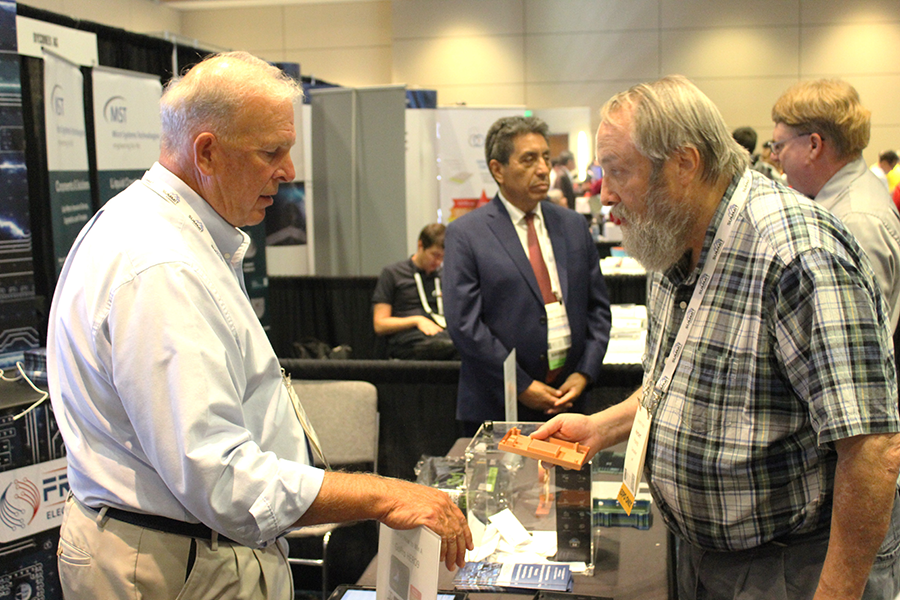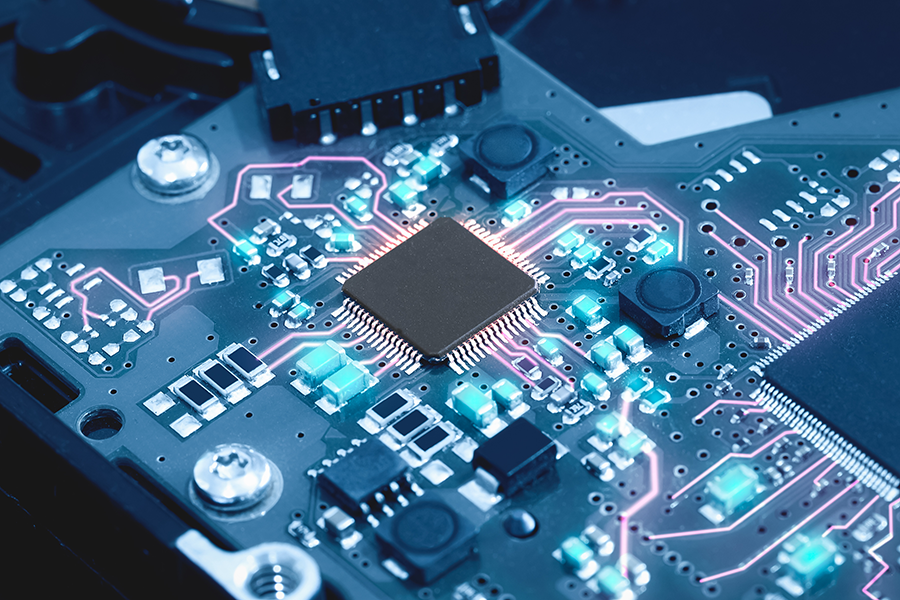‘A Seamless Solution’
With new leadership at the helm, Freedom CAD is looking to the future while maintaining its standards.
by Tyler Hanes
Freedom CAD has been offering electronic product development and PCB design services since its inception in 2003, but the core team behind the company has been together since the early ’90s.

That leadership has built the company into one of the largest design service bureaus in the US, offering design and engineering services for more than 150 customers per year – many of whom have been customers since the early days.
“We have a long history, and with that, we have a long history with our customers,” said COO Scott Miller.
While those decades of experience have helped build up the company, Freedom CAD earlier this year appointed a new CEO, Brian White, and named his brother, Patrick White, vice president of operations to guide the company into the future and deal with the growing challenges of talent recruitment and new technology.
‘From CAD to the Lab’
Freedom CAD typically works with three types of customers, said Miller, including those that have no in-house hardware development capabilities, those that have in-house capabilities but lack room or resources for peak demands, and those looking for someone to step in to handle more advanced technologies that are beyond their comfort level.
While design service bureaus have traditionally focused on PCB layout, Freedom CAD has developed into a company that can offer engineering services such as electrical, mechanical, and signal and power integrity while still maintaining its strong skills in layout.
One of Freedom CAD’s strengths is the ability to enter a project anywhere along a customer’s timeline – whether helping with the initial design steps and working from there or jumping into the middle of the project to help a customer with just one step, Miller said.

“Customers can enter at any point along the way,” he said.
Once through the engineering effort, Freedom CAD also provides a turnkey solution for manufacturing, or “getting from CAD to the lab,” as Miller describes it.
While the company doesn’t do any manufacturing itself, it does have longstanding relationships with board fabricators that take a project to the manufacturing stage.
“We’ll procure the components, and contract manufacturers will do the assembly work under our direction,” he said. “That allows us to provide a customer with a seamless solution from concept to parts in hand in the lab.”
On the design front, Freedom CAD works with the four primary design programs used throughout the industry: Cadence Allegro, Altium Designer, and Siemens’ Xpedition and PADS tools.
It is also a certified design partner with Siemens’ Valor NPI, which can help catch design errors that the four CAD flows might miss, and the Freedom CAD team is adept at preparing that DfM (design for manufacturing) data into reports that can save headaches in the manufacturing process, said CEO Brian White.
“They can be confident that they can take that data to the manufacturer, and they’ll have everything they need in a standard format,” he said. “And that saves time and prevents a lot of back-and-forth with the manufacturer.”
One of the key ideas behind the creation of Freedom CAD was having the scale to work with multiple customers on multiple projects all at the same time, Miller said.
He said the R&D process typically involves peaks and valleys in demand, so the company has worked to overlay those peaks and valleys with each other to maintain a balanced workload through the year.
Freedom CAD averages around 150 customers per year, with many having multiple projects during that time, and that scale was an important factor in developing the Valor process, because many other similar companies are too small to pay for the software or have experts on hand to interpret the data, Miller said.
“Because of our scale and the fact that we deal with so many customers, it affords us the opportunity to provide our customers with a consistent level of quality and assurance,” he said. “Whether you’re a billion-dollar customer or a ten-thousand-dollar customer, you’re getting the same level of quality coming out the door.”
With the component shortages of the past few years, many companies have approached Freedom CAD for help redesigning a board after they were unable to source a specific part, while others simply want assurances that the part they’re using will be available in the future, Miller said.
He said when working with a customer on engineering or layout, Freedom CAD’s team will find out what components are available and what issues may bubble up in the near future, and then fit those new parts into the design before it gets to the production stage.
“We do a lot of that analysis during the design process, so by the time the design is complete and we’re ready to go to fabrication, we’ve tried to iron out all the obstacles that would prevent us from going into production and getting a quickturn prototype,” Miller said.

New Leadership
Earlier this year, the company promoted former executive vice president Brian White to the role of CEO, and Brian’s brother, Patrick, has taken over as vice president of operations.
The industry as a whole is seeing more designers reaching retirement age, and while some of them have continued to work, the need is growing for new designers – as well as new leadership, Miller said.
“Not only do we see the graying of the industry at the design level, but also at the management level,” he said. “A lot of the design service bureaus are run by the ‘gray hairs,’ and we’ve recognized that and turned this over to Brian and Pat.”
Patrick White is a product of Freedom CAD’s designer training program put into place 18 years ago, and he is working to improve the program and recruit the next generation.
“I’ve found that the career path isn’t necessarily a tough sell, because they don’t need a four-year degree to get into it while earning a good income,” he said. “It’s not a well-known job or career path, but once people do learn about it, it can be a good option for people just out of college or high school.”
While the job isn’t hard to sell, finding the talent to fill the job can be a challenge, and Patrick White said his personal experience in Freedom CAD’s training program is helping him recognize that talent and develop it for a long career.
Back when he started in the training program 15 years ago, he said the experience was not very structured, with no specific person training him and moving between whichever projects were available at the time.
Since began overseeing the training, he has tried to put a little more structure into it and provide focused, deliberate training that builds on lessons learned while also providing mentors who can guide trainees along the way.
PCB design doesn’t typically have concrete right or wrong answers, so it’s important to let young designers get hands-on in the design process and come face-to-face with the different priorities and tradeoffs that they’ll see as part of the job – and then get repeated feedback from their trainer about what they did well and what they need to work on, Patrick White said.
“Getting people in the door, I don’t think is a huge challenge,” he said. “It’s just a matter of organizing our resources and having a mentor to build their confidence.”
PCB design is a lot like a trade such as an electrician, where you can read a lot about the job going in, but you really need a lot of on-the-job training before you can do it on your own, said Brian White.
“It’s kind of the same experience in this industry, where you really need that hands-on experience,” he said. “That’s where you really learn how to do it. A book can’t teach you all the ins and outs.”
The Rise of AI
With the growing ability of artificial intelligence to take over some of the work normally done by human labor, tech companies have made inroads to develop AI tools for design, Miller said.
Right now, those fledgling tools still need a guiding hand from a person to perform the job, but it’s something that will continue to be developed and improved upon, he said.
“That’s something that we really have to keep an eye on,” he said.
Miller said the development of those AI tools have been part of the driving force behind Freedom CAD’s shift from layout to offering more engineering services, because if AI is eventually able to lay out a board at a human level, customers will still need those engineering services.
“We’re not ignorant of it,” he said. “We know AI is going to affect everybody – and it’s already beginning to – and our industry isn’t immune to it.”
AI can also be a point of optimism for the industry as well, as it is part of the continuing growth of electronics in daily life, said Brian White.
With electric vehicles hitting the road, the Internet of Things connecting the household, and the rise of drone companies and private space travel, the need for circuit boards should continue to grow into the future, he said.
“It feels like a good place to be because we don’t see that need going away any time soon,” he said.
The variety of electronics coming through the door is also one of the selling points when talking to a potential recruit, and Freedom CAD was built to be able to handle whatever new technology is next to rise, Miller said.
“We don’t know what the next horizon’s going to be, but we do know that electronics are evolving, and we’re in a good position to provide a breadth of services and be able to engage with customers in different ways,” he said. “And that’s really our mission.” 
Tyler Hanes is managing editor of PCD&F/CIRCUITS ASSEMBLY; tyler@pcea.net.

